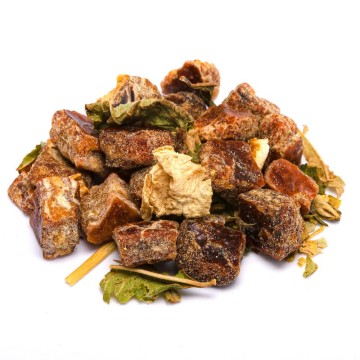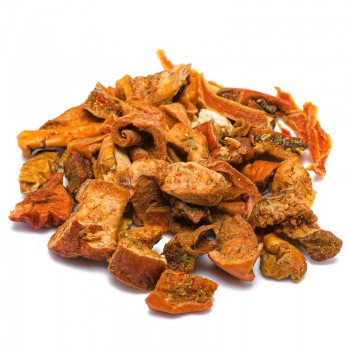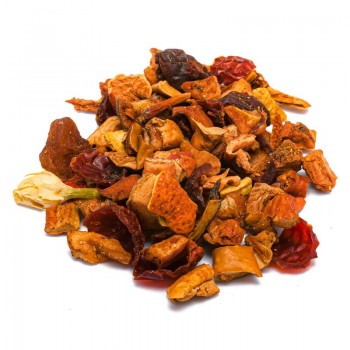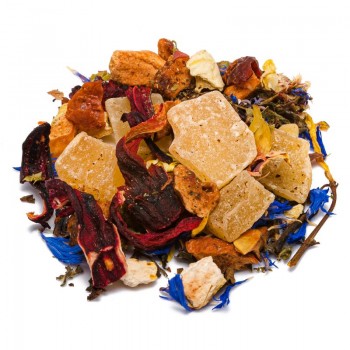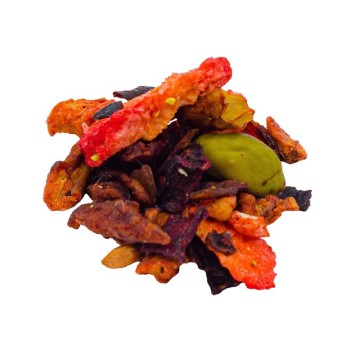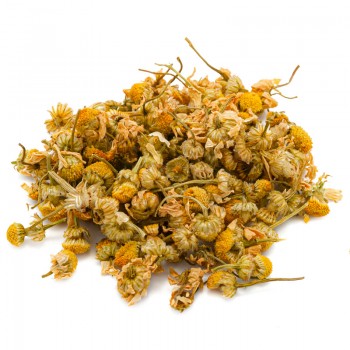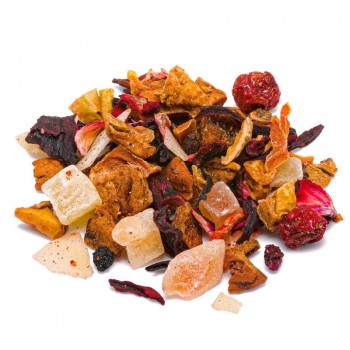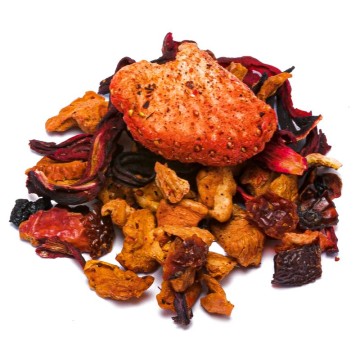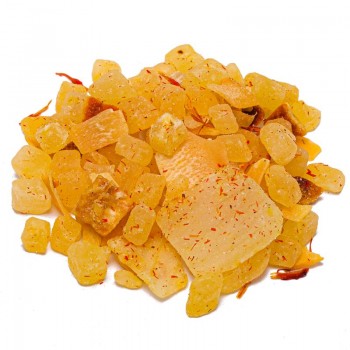Full-bodied, colorful and exquisite, this infusion is made up of many ingredients in addition to the beneficial pomegranate. In particular, hibiscus and pineapple create a fruity part, while the texture is given by other sweet elements such as strawberry yoghurt and rice flour. They give a full-bodied touch to the infusion, which has a flavor linked to pungent pomegranate and juicy red fruits. The delicious note? The colorful unicorns, which make it a fruity and cheerful infusion, perfect for everyone!
Raspberry and pomegranate infusion: properties and benefits
By exploiting the principles contained in the blend, the infusion helps the body to obtain various vitamins. The pomegranate in the infusion releases active ingredients useful for reducing blood pressure and promoting diuresis, together with hibiscus and strawberry. For the well-being of the skin, the infusion releases vitamin C and antioxidants that fight free radicals – substances that damage our cells. Both hibiscus and pineapple, strawberry and pomegranate are sources of vitamin C, which helps absorb iron and contributes to the formation of collagen – the protein found in hair, skin and nails. This vitamin is known to benefit the immune system, and in the infusion it joins vitamin A, some of the B group from pineapple. Some vitamins are also present in rice flour (niacin, vitamin D, thiamin and riboflavin). Furthermore, elements useful to our body are present in the infusion such as potassium, iron and various antioxidants.
Origins and History of cultivation
The herbal tea blend has several elements, and we will speak in particular of the pomegranate (or pomegranate). Its history is ancient, and already 4000 years ago it was mentioned by various civilizations, already in the Bible. It is native to Iran and the Indian Himalayas, and over time it has been cultivated throughout the Mediterranean region of Asia, Africa and Europe. From Iran, in fact, it also reached Indonesia, in areas of South-East Asia, Malaysia, Burma and as far as Saudi Arabia and Bermuda. Over time, the crops have also reached Central and South America. It adapts well to temperate climates, losing its leaves in the cold winter, and germinates in early spring - while the fruit ripens in late summer.
Pomegranates have often been a symbol of hope and abundance in every part of the world, due to the richness of their grains and the beauty of the fruit. They were present in Jewish decorations and ceremonies, on ancient coins, in Egyptian mythology. In many populations, in particular, the pomegranate fruit is linked to prosperity and marital happiness. For example, during the Persian wedding ceremony, a basket of pomegranates symbolizes a joyful future. In Crete, the groom gives a pomegranate to the bride as she moves into her new home. In Turkey, the bride throws a pomegranate to the ground after the wedding ceremony, to figure out how many children she will have by the number of seeds that fall.
Even in China, a ripe and open pomegranate is a wedding gift, which expresses the desire to have as many children as there are seeds. The scientific name of the pomegranate is Punica granatum. Punic identifies the locality of origin, i.e. from the Carthaginians who first cultivated it. The Italian word, on the other hand, comes from the apple (malum) which contains many seeds (granatum). The so-called pomegranate tea is a specialty that is usually prepared with pomegranate seeds or with dried pomegranate flowers, according to tradition. It is an infusion that has been prepared for thousands of years, since these fruits were known for their benefits, due to the nutrients and antioxidants they contain.
Fruit and flowers
The components of the infusion are many, and the mixture includes leaves and flowers of different origins, of which we will mention just a few. The pomegranate, (Punica granatum) is a small tree in the Lythraceae family. It is known for its fruits, which produce juicy arils. The plant can reach 5 or 7 meters in height, and displays orange-red flowers. The fruit is the size of a large orange, more or less, with a smooth and leathery skin. Its color varies from brownish yellow to dark red. The inside is divided into several cavities, containing many transparent arils of reddish and juicy pulp. Each surrounds an elongated, angular seed - the arils are the outer part of the seed, usually fleshy and coloured. Hibiscus is a plant of the Malvaceae family with large trumpet-shaped flowers, of different colors depending on the species. There are two main types of hibiscus. Hardy deciduous hibiscus (Hibiscus syriacus) and everlasting hibiscusevergreen (Hibiscus rosa-sinensis), also known as tropical hibiscus. The one from which the flowers for karkadè are obtained, on the other hand, is the Hibiscus sabdariffa plant; widespread especially in tropical and subtropical countries. Pineapple plants (Ananas comosus) are tropical shrubs of the Bromeliaceae family. They have tough, waxy leaves, which grow in a rosette, and each mature pineapple plant produces a single fruit at the end of a long, stiff central stem. The fruits, in fact, emerge from the center of the bromeliad plant, with the fusion of about 200 single flowers that develop into berries. The juicy fruit with yellow flesh comes from this fusion of plant and flower. The apple tree is the Malus domestica of the Rosaceae family. It is a tree native to Asia, now widespread throughout the planet for the production of apples. These fruits differ in colors and in the many varieties present, used in human nutrition for thousands of years.
Nutritional values of raspberry and pomegranate infusion
The main active ingredients are vitamins C, A, some of group B, as well as organic elements such as potassium and various antioxidants. How to use the ingredients in the infusion
The infusion is obtained by placing about 3-5 grams of the mixture with water at 100 °C in a cup (250 ml). Let it steep for 10 to 12 minutes before drinking. The tiny sugar unicorns already give the infusion a sweet note.
Raspberry and pomegranate infusion: side effects and contraindications
The blend brings benefits but it is necessary to respect the recommended doses, and not to exceed in consumption for too long periods. Excessive consumption of the pomegranate infusion can cause diarrhea, meteorism, headache, nausea. Furthermore, it is necessary to evaluate the components of the infusion for those suffering from any allergies or intolerances. We remind you that some ingredients are rich in sugars, which may have contraindications for those suffering from diabetes or who risk raising their blood sugar.

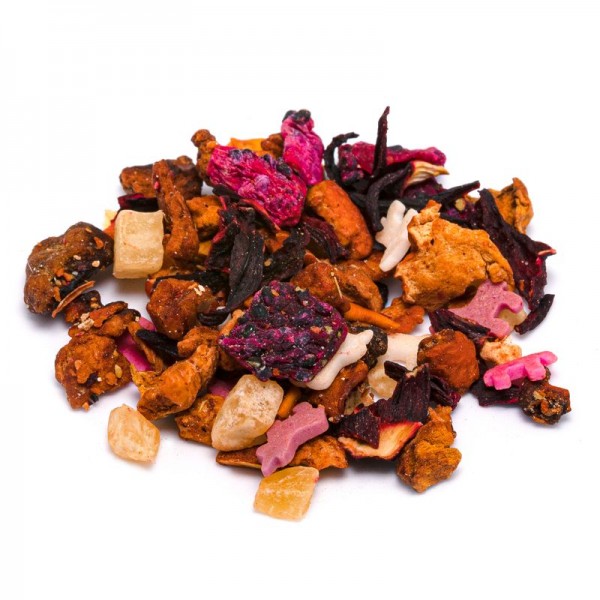









 No reward points for this product.
No reward points for this product.






